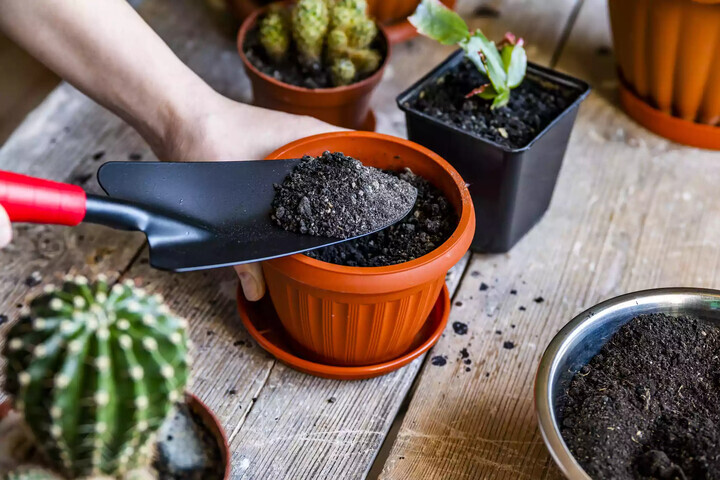Cacti are low-maintenance houseplants that rarely require repotting, but when they do it's important to ensure that it is done correctly and safely. Once roots start poking through the drainage holes at the bottom of the pot, it is time to transplant your cactus. Since they are slow-growing, cacti typically only require transplanting every 3-4 years, or every 2-3 years for faster-growing varieties.
Many cacti varieties are adorned with sharp spines that act as protection for the plant. This also makes transplanting cacti a difficult, and sometimes dangerous task. One of the best ways to transplant a cactus safely is to use a pair of metal tongs, like the ones you would find in your kitchen. It's also a good idea to invest in a pair of thick protective gardening gloves. Avoid gardening gloves that are made of fabric rather than thick canvas or leather as cacti spines can easily penetrate most fabrics.
It's best to transplant a cactus in the early to mid-spring when the plant has entered its active growing period. This will ensure that the cactus has the energy to recover from being handled and acclimate to its new environment.

What You'll Need
Equipment / Tools
Protective gloves
Metal tongs
Newspaper
Materials
Cactus/succulent soil mix
Potting container
Instructions
1.Prepare Your Tools and Supplies
The tools required for transplanting a cactus depend on the size and spikiness of the plant. For example, when transplanting smaller cacti, metal tongs and/or newspapers may not be necessary whereas larger cacti may require a full arsenal of protective equipment.
Regardless of the size, wearing thick, protective gloves is always recommended when handling cacti.
2.Remove the Cactus from the Old Pot
Loosen the soil around the edges of the pot with a dull knife or trowel if necessary. If needed, you can wrap the cactus in several layers of newspaper to make it easier to grab, or you can use the metal tongs to handle the cactus. Gently wiggle the root ball out of the old pot and lay the cactus flat on your working area.
3.Loosen the Root Ball & Discard the Old Soil
Once the cactus has been removed from its old pot, the root ball should be loosened and the old soil discarded. Depending on how root-bound the plant is, this can sometimes be a delicate process. Take it slow and be careful not to break too many roots.
4.Inspect the Roots and Trim if Necessary
While the roots are exposed it is a good idea to check them over for any signs of pests or diseases. Cut back any dead or diseased roots and apply a fungicide if needed.
5.Choose the New Pot
If you are prone to overwatering, choose a clay/terracotta pot for your cactus. While cacti can grow in any potting container, unglazed clay pots help to absorb excess moisture in the soil and prevent overwatering. Regardless of the type of pot that you choose, ensure there is a drainage hole at the bottom.
6.Plant the Cactus in the New Pot
Fill the bottom of the new pot with the cactus soil mixture (you can buy cactus soil in-store, or make it yourself), ensuring that the cactus will be planted at the same depth as its previous container. Using the tongs or newspaper, gently place the cactus in the pot and hold it in place while you fill the remainder of the pot with soil.
Do not water the freshly transplanted cactus right away as it needs time to adjust to its new conditions. After a week or so you can resume your regular watering schedule.
Cacti are hardy and adaptable, and most varieties handle transplanting well as long as they were healthy prior to being repotted. Ensure that you place your freshly repotted cactus back in its original location so it can continue to receive the same amount of light and ventilation that it was before it was transplanted.
As cacti are desert plants, they require a significant amount of sunlight to support new growth. A sunny south- or west-facing windowsill is ideal for most cacti varieties. If you live in an area that receives warm summers, placing your cactus outdoors for the summer in full sun is one of the best ways to encourage new growth!